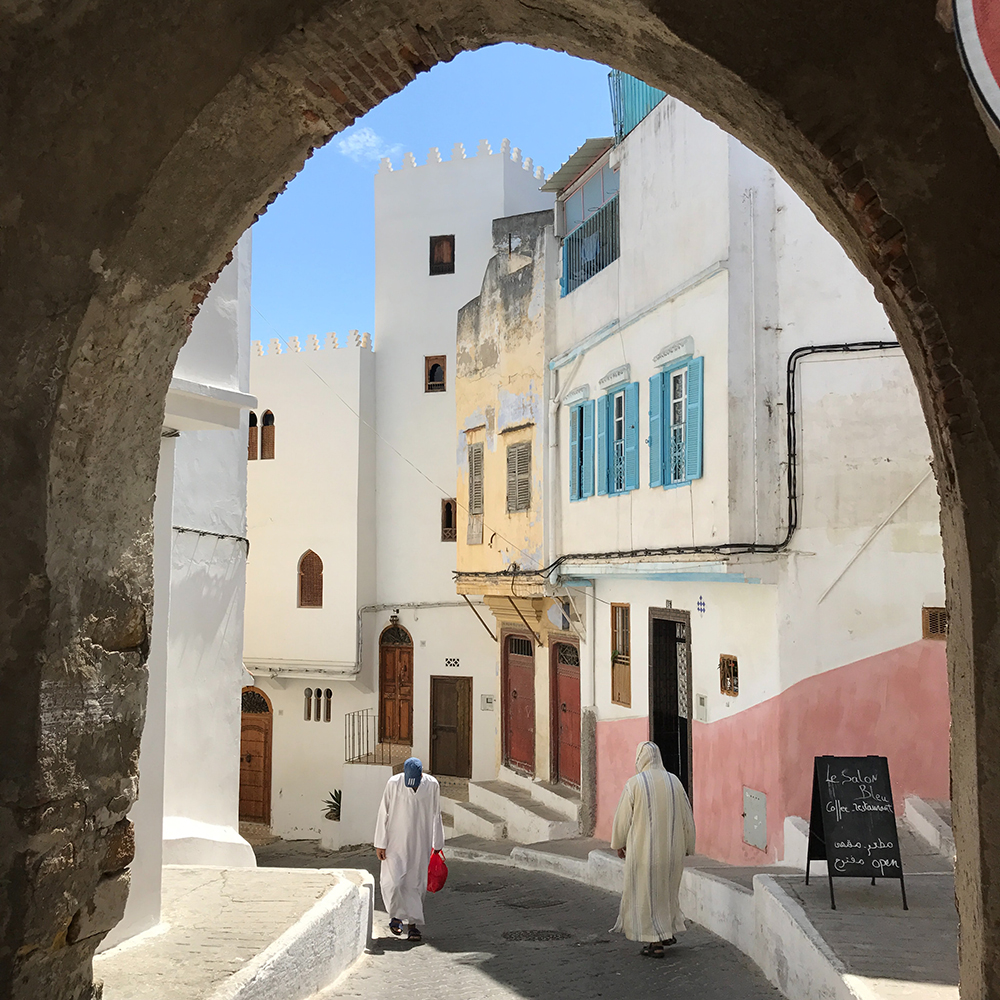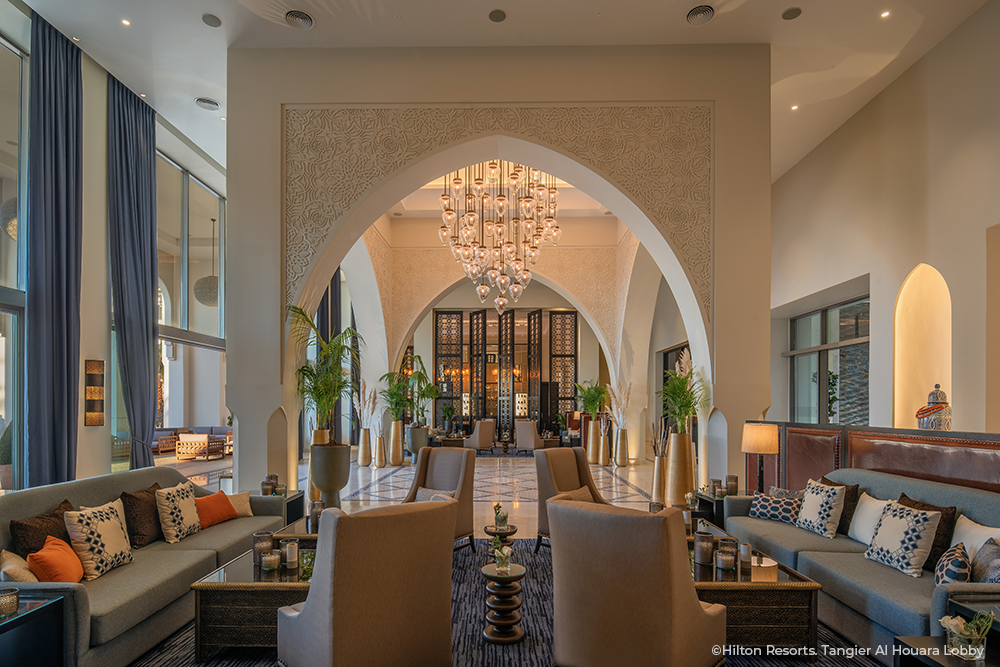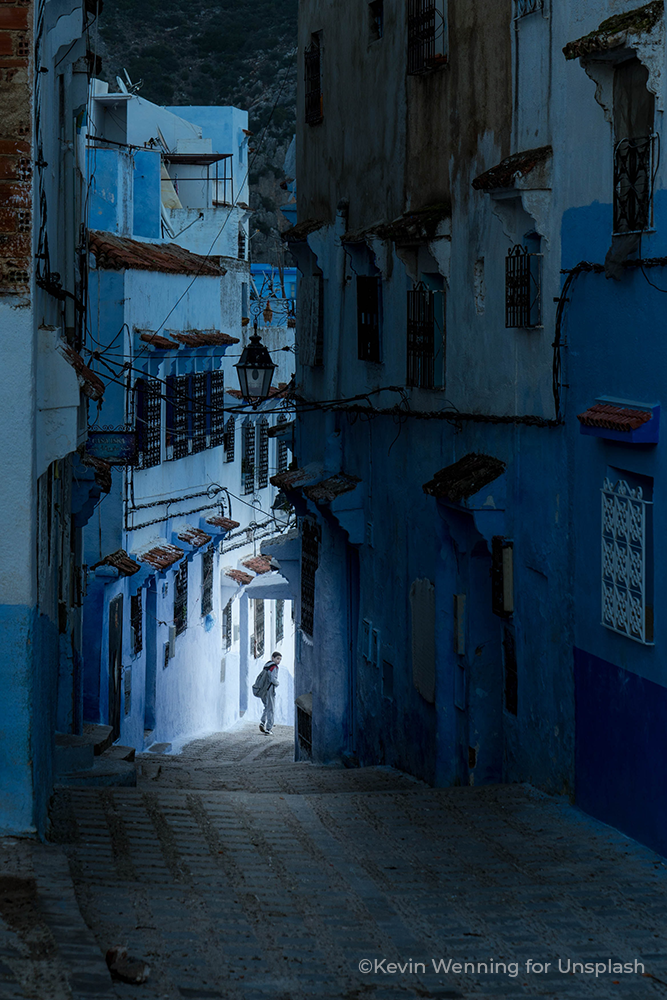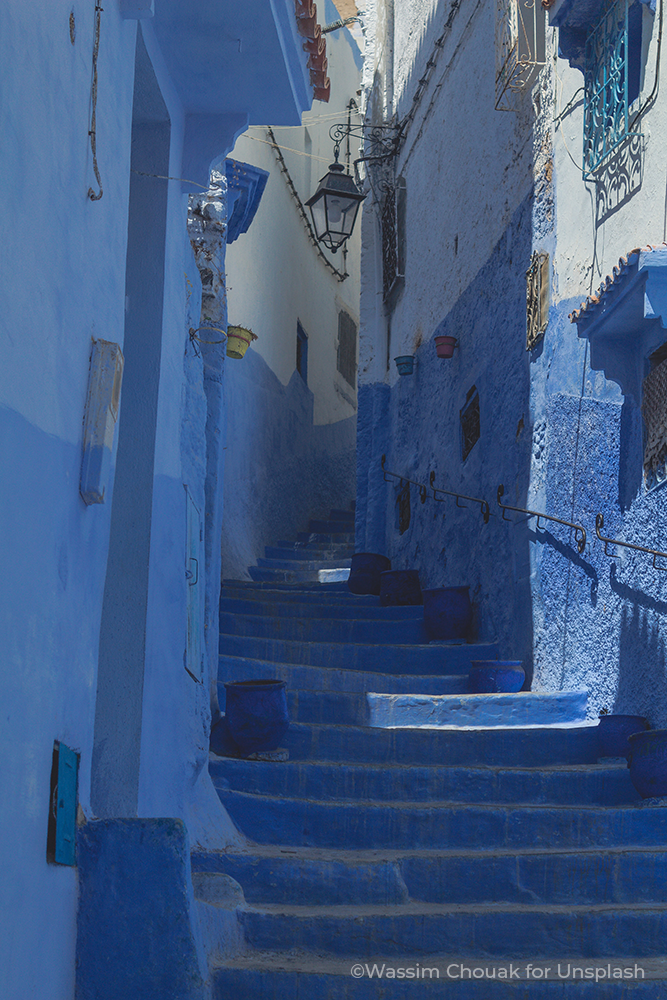Morocco: A Tale of two Cities
Tangier's bohemian history and eclectic shopping can be twinned with the Blue Pearl of Chefaouen to create the perfect Moroccan city break, says Lynn Hougton
Published January 2021
This is a feature from Issue 3 of Charitable Traveller. Click to read more from this issue.
Below a searing blue sky, the air is suffused with the sweet odour of animals and the cacophony of haggling is intoxicating. Each building – some cream-coloured, some brightly painted – is tucked in a higgledy-piggledy fashion next to the other along the narrow streets and many are adorned with deftly designed stone arches or filigreed doors. This part of the medina focuses on food and the smell of freshly baked pastries and breads wafts in the air as I squeeze past the tiny wooden carts they are piled on, passing colourful spices, fruit and vegetables too.
Tangier teeters on the cusp between Europe, Africa, and the Middle East. Separated from Spain’s Andalucía by only 100 km of water, there’s one main cultural difference between them (one which has created an intense conflict over the centuries) and that’s religion, though Andalucía was ruled by Islamic North Africa for over 500 years.
Much like seeing my name in Arabic for the first time (the undulating scroll is so much more romantic than Times New Roman), entering the Medina offers an almost quixotic buzz. Our group started the tour outside the old city in a small grassy square lined with bohemian cafes and dotted with benches where locals smoked or sipped coffee. Steps away, the exotic and ancient Medina is like another dimension where nearly everyone – men and women, old and young – is dressed in the traditional Djellaba, a loose and flowing robe with a pointed hood much cooler than close-fitting Western clothes and infinitely more mystical in appearance.
Into the Labyrinth
Moving deeper into this warren of tiny streets, a wider variety of shops and stands appear, all of which have neatly displayed wares covered with awnings to protect from the heat. There’s an incredible selection of leather: wallets, shoes, bags, babouche (soft slippers) notebooks and more. Also piled high are lanterns, rugs and carpets, olive oil, organic soaps, and ceramics. Haggling is the norm here but there are few price tags for you to gauge the starting bid.
I can’t help noticing little alleys every so often, leading to temptingly shady courtyards with tiny gardens. Oh to wander into them and have a nose around!
Often called the gateway to North Africa, Tangier had a succession of rulers, starting with the Phoenicians in the 10th century B.C. and followed by the Romans, Portuguese, Spanish, French and British. By the time France granted Morocco independence in 1955, it was known for its free-wheeling and liberal attitude.

Booze-soaked and hash-fuelled creative sessions at hotels and cafes drew the Beat generation of the 1950s here – Jack Kerouac, William S. Burroughs, Allen Ginsberg, Tennessee Williams, and even Truman Capote. Tangier’s perhaps slightly too liberal attitude soon had it teetering on the edge of decay but I’m told when Mohammed VI came to the throne in 1970, he saw that the city was cleaned up.
As a travel writer, I can’t pass up the chance to pay a visit to the tomb of Ibn Battuta, a famous Moroccan itinerant who travelled most of the world in the 14th century before returning to his hometown. He’s now tucked away forever in the tiny back streets of Tangier and a small dome with a plaque honours his adventurous spirit.
I stumble across the Légation Américain de Tanger’ the oldest U.S. diplomatic property in the world. Morocco was the first country to recognise the U.S. as being independent from Great Britain and the ruling Sultan of that time gave this tranquil property to the Americans in 1821. Though it’s no longer used for diplomatic purposes, the enormous dining room is still decorated as it would have been for formal events and the art and 19th-century photographs adorning the walls give a time-warp feel.

Rock the Kasbah

Into the Blue


This is a feature from Issue 3 of Charitable Traveller.

















 by net effect
by net effect